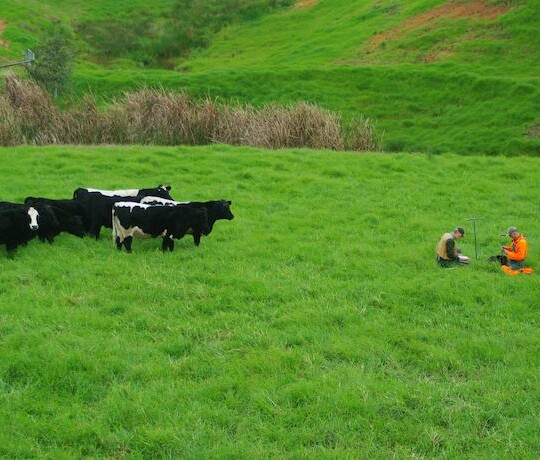Mapping: inventory and assessment
Physical factors that drive land use capability were mapped along with a number of interpreted products
Inventory and assessment
Five key physical soil and land resource factors that drive land use capability were mapped.
The five physical factors are:
- Rock – The rock type units of the NZLRI are based on the dominant rock type for the area in question.
- Soil – A dominant soil type is mapped. The soil type units used in the NZLRI are based on the soils described in a number of previous soil surveys, particularly the General Survey of the Soils of the South Island, New Zealand and its sister publication, General Survey of the Soils of the North Island, New Zealand.
- Slope – The slope units of the NZLRI for an area are based on the dominant slope class of the area in question.
- Erosion – Classes of present type and severity of erosion are recorded for the area in question (see Section 2.4 and Appendix 2 of the LUC Handbook).
- Vegetation cover – Vegetation cover using a national classification is recorded for the area in question (see Section 2.5 and Appendix 3 of the LUC Handbook).
As well as the five physical factors, a number of interpreted products are included:
- Land Use Capability (LUC) assessments — LUC assessments rate the ability of each polygon to sustain agricultural and forestry production, based on an assessment of the inventory factors above, climate, the effects of past land use, and the potential for erosion. The NZLRI covers the country in 11 regions, each with a separate LUC classification.
- Derived Fundamental Data Layers (FDLs) and Fundamental soil layers (FSL) — contains data for 16 key soil attributes nationally.
- Pastoral and forestry production parameters, plus administrative and natural boundaries.
References
Lynn I.H., Manderson A.K., Page M.J., Harmsworth G.R., Eyles G.O., Douglas G.B., Mackay A.D., Newsome P.J.F. 2009. Land Use Capability survey handbook – a New Zealand handbook for the classification of land. 3rd edition. AgResearch Hamilton; Manaaki Whenua Lincoln; GNS Science Lower Hutt, New Zealand.
Newsome P.F.J. 1992. New Zealand Land Resource Inventory Arc/lnfo Data Manual Edition 1. DSIR Land Resources Technical Record 81
https://docs.niwa.co.nz/library/public/NewPFNew.pdf
NWASCO 1975-79: "New Zealand Land Resource Inventory Survey", 1:63,360. National Water and Soil Conservation Organisation, Wellington, New Zealand.
